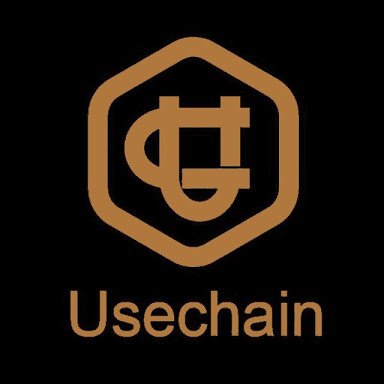
Blockchain technology is now being applied in astonishing areas of human endeavour. For example, the Russian government recently announced that they would test the use of blockchain in a public election and see if it could prevent electoral frauds.
On a closer look, the major reason why blockchain is becoming so popular is due to its certain features which could be use to build better products and services for our society. Examples of these attributes are scalability, security, high performance, smart contracts, decentralization, tokenization, etc.
However, the truth is that different blockchain platforms have different technical capabilities and differ in efficiency. As a matter of fact, potential users and investors need to examine each blockchain project closely before committing themselves to it.
In this piece, I intend to take a closer look at the technical framework of the recently launched Usechain platform. I will provide information about its details in comparison with other blockchains.
Before we proceed however, here is a quick recap of what Usechain is all about.
Usechain
Usechain is a recent blockchain platform that claims to use the Mirror Identity with Randomized Proof of Work Consensus (RPoW) to deliver high performance and security.
Usechain is touted by its developers to be a new generation blockchain (Blockchain 3.0). The vision for the project is to create a new network that would overcome some limitations of blockchain ecosystems. The implication is that Usechain is expected to have some technical features which distinguishes it from other blockchains.
Comparison of Usechain with other Blockchains Using its Technical DetailsThis comparison will be made using such criteria as:
Network Sharding
Zero-knowledge Proof
Multi-level Authentication
RPoW Consensus Mechanism
Identity Virtual Machine (IVM)
Light Node Client
Online Fault Tolerance
Network Sharding
As at February this year, Ethereum could only handle 25 Transactions per Second, while Bitcoin capacity was a mere 7 TPS. On the other hand, Usechain can handle thousands of transactions within a second. How is this possible?
Well, it's can be achieved by a concept called Sharding.
Sharding is an idea which is very popular among database administrators to make their tasks more efficient. A shard is simply a horizontal part of a database with each shard being stored in a distinct server. This spreads the work or load and makes the system more efficient.
Usechain deploys the KaZaA P2P protocol to achieve sharding based on the account address of participants. Each transaction could be confirmed with the shard it belongs to without any need for confirmation by the entire network.
As a result, speed of transaction is greatly increased and the bearing capacity to resist double-spending is also enhanced.
Note: Sharding isn't compatible with PoW. Only PoS or newer generation blockchain platforms can use it.
Zero-knowledge Proof
Zero-knowledge Proof is an old concept in cryptography that's now being used to redefine privacy on blockchain platforms.
It's a method by which one party or prover can prove to another party or verifier that a certain transaction is true without disclosing any other information outside of this.
This will lead to high security of information on the platform and protection from unauthorized access.
Zero-knowledge Proof is being applied on blockchain projects recently. Zcash, Ethereum (through its Byzantine upgrade), and Usechain are among the few networks to first adopt it.
Multi-level Authentication
This involves the use of cryptography to maintain security on a network by means of a multi-level correspondence between on-chain address and the identity of authentic users.
However, multi-level authentication is hard to develop or support, and only few systems can maintain it. One of such systems is Usechain and this is quite commendable.
RPoW Consensus Mechanism
Usechain utilizes the Randomized Proof of Work (RPoW) Consensus which is a modification of the old PoW used for Bitcoin. On it, a verifiable random function is used to ease block hashing to improve speed, scalability, and decrease energy consumption.
A comparison of RPoW to other consensus algorithms has been made in an earlier article. Please, refer to the appropriate link to read the full details.
Identity Virtual Machine (IVM)
This is a new idea for generating high-performance smart contracts with certain innovations. The concept is to build a intermediate communication layer for interacting with sub-chains, underlying blockchains, and even external APIs. IVM enables the execution of highly efficient smart contracts and external applications in diverse areas.
Apart from RPoW, IVM also differentiates Usechain from other common blockchain platforms.
Light Node Client
Usechain adopts the higher-level Merkle Tree BCMT to reduce the amount of data that lightweight clients need to synchronize before confirming the accuracy of any transaction or data. With this, every smartphone user can conveniently access Usechain in a decentralized manners.
Online Fault Tolerance
This is based on the idea that a forked or compromised node or client could just be simply separated from the network without affecting the entire ecosystem. Other nodes will continue to function without hitches.
Usechain uses the sole identity mapping to achieve this unique innovation even though fault tolerance is a feature of almost all blockchain platforms.
ConclusionFrom the foregoing analysis of technical details of Usechain, it could be seen that it's indeed a unique project. While it shares many technical attributes with other blockchains like Ethereum and Bitcoin, yet it also has some special features not available on any other blockchain platform.
Questions regarding this innovative Mirror Identity Blockchain, are welcomed from our esteemed readers.
Additional information on Usechain can be gotten from their Website or the Whitepaper.
USEFUL LINKS
Thank you for reading!







Congratulations @gwensarah1! You have completed the following achievement on Steemit and have been rewarded with new badge(s) :
Click on the badge to view your Board of Honor.
If you no longer want to receive notifications, reply to this comment with the word
STOPPrivacy coins are mostly likely undervalued. The fact that Usechain also incorporates privacy in their own blockchain can help increase mass adoption and utility of the token.
Recently i have been following this project and i have come to understand that Usechain is superb. Aside the fact that this platform will serve as a standard in the blockchain industry, it will also help to provide support for the adoption of the blockchain technology into our daily lives by generating a unique value and extensively support various transactions at a reduced charged fee with faster confirmations.
What’s the current development progress of Usechain mainnet? how much tps now?
At present, the development of the first version mainnet is mainly completed,test and optimization ongoing, the tps has been thousands, mainnet hasn’t been released now.
Great article, only a few blockchain project focus on utility and respect consumer privacy, hopefully Usechain will be able to implement privacy for its users and thus gain mass adoption.
This multi-functional platform, supported by great features including Hardware-Based Performance Improvement features, Privacy-Protected Identity Application, Unlimited Identity Ecosystems, and Supported by the Most Popular Business Schools.
Personally I think usechain is one of the best ico of 2018 due to the tech behind it and you guys keep promoting it through great reviews and putting it into a more understandable perspective. Great article BTW.
Despite all these benefits offered by blockchain technology, the issue of scalability and identity protection has been a major challenge undermining the relevance and effectiveness of the blockchain. Usechain has come into existence to address this issue.
Usechain would generate trust across borders, among strangers and also limit the ability of dishonest people to cheat. It would also lower the barrier for poor people to benefit from financial services and make the trust machine more accessible to the general public.
Because of the implementation of the Mirror Identity Protocol and RPOW consensus algorithm, it’s not required to possess a mining farm to mine UST as mining can be easily done from my mobile device. Wow usechain has definitely lifted this burden.
Can you explain what differentiates Usechain from Zilliqa or Quarkchain? It seems that there are multiple platforms all claiming higher transaction and similar benefits, but what sets Usechain apart?
Zilliqa is on sharding but they dont use one to one mapping between individual and accounts. Quarkchain uses subchain idea but no uniqueness property. Usechain is the only one with a unique idea and resolves the impossibility triangle.
Great and detailed review by the way, I was able to understand the concept behind Usechain better, I still have to thoroughly inspect all the aspects of the project, but it definitely seems like a winner which will thrive on the open market.
Posted using Partiko Android
this project is one of the best project in 2018. i wish success to team and special thank for their effort!
This project has the potential to reach one the top 5 projects. The innovation and high standard quality team is a big plus.